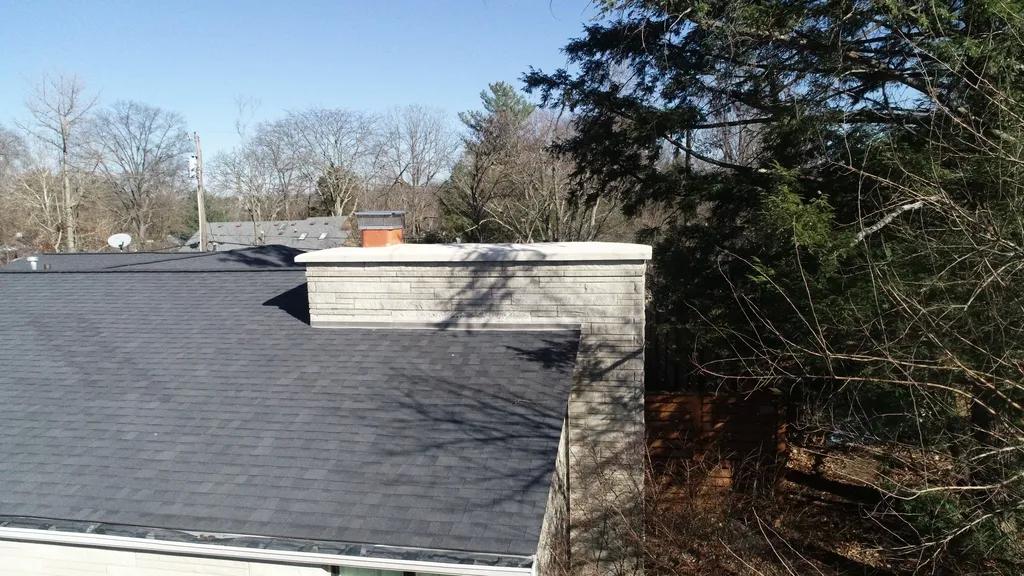Rainwater may seem harmless, but when it infiltrates your chimney it can pose serious hazards to your home and family. In Ohio, where rainfall is frequent and abundant, it is essential for homeowners to be aware of the potential dangers associated with rain entering their chimney. From structural damage to environmental hazards, the consequences of this infiltration can be costly and dangerous. In this article, we will explore the potential hazards of Ohio rain entering chimneys and provide insights on how to prevent and mitigate these risks.
Table of Contents
- Potential Damage to Chimney Structure from Rain Infiltration
- Risk of Water Damage to Interior Walls and Ceilings
- Formation of Mold and Mildew Due to Moisture Buildup
- Preventative Measures to Safeguard Chimney from Rain Entry
- Q&A
- Wrapping Up

Potential Damage to Chimney Structure from Rain Infiltration
Ohio is known for its unpredictable weather patterns, with frequent rain showers throughout the year. While rain is essential for the environment, it can also pose a threat to your chimney structure if not properly managed. One of the potential hazards of rain entering the chimney is water infiltration, which can cause significant damage over time.
Water entering the chimney can lead to a variety of issues, including:
- Brick and mortar deterioration: Constant exposure to water can cause the bricks and mortar of the chimney to deteriorate, weakening the structure over time.
- Rust and corrosion: Rainwater can also cause metal components within the chimney, such as the damper or flue liner, to rust and corrode, compromising their functionality.
- Mold and mildew growth: Moisture from rain infiltration can create a breeding ground for mold and mildew, posing health risks to you and your family.

Risk of Water Damage to Interior Walls and Ceilings
With the rainy season approaching in Ohio, homeowners need to be aware of the potential hazards of rainwater entering their chimney. This can lead to serious water damage to the interior walls and ceilings of their homes if not addressed promptly. Water leaking into the chimney can seep through cracks and gaps, causing stains, mold growth, and structural damage.
To prevent water damage to interior walls and ceilings caused by rain entering the chimney, homeowners should consider taking the following precautions:
- Inspect the chimney regularly for any cracks or gaps.
- Install a chimney cap to prevent rainwater from directly entering the flue.
- Ensure that the chimney flashing is properly sealed to prevent leaks.

Formation of Mold and Mildew Due to Moisture Buildup
One of the potential hazards of Ohio rain entering the chimney is the . When rainwater seeps into the chimney, it can create a damp environment that is conducive to the growth of mold and mildew. These fungi can spread quickly and release spores into the air, posing a health risk to anyone in the vicinity.
Mold and mildew not only cause unpleasant odors and unsightly stains, but they can also trigger allergies and respiratory issues. It is essential to address moisture buildup in the chimney promptly to prevent mold and mildew growth. Regular chimney inspections and maintenance can help identify and fix any leaks or damage that may be allowing rainwater to enter the chimney. Additionally, installing a chimney cap can help prevent rainwater from directly entering the chimney and causing moisture buildup. By taking these preventive measures, homeowners can protect their health and maintain the integrity of their chimney.
Preventative Measures to Safeguard Chimney from Rain Entry
One of the potential hazards of Ohio rain entering your chimney is water damage. Rainwater can seep through cracks and gaps in the chimney structure, causing damage to the flue liner, bricks, and mortar. This can lead to costly repairs and pose a safety risk if not addressed promptly. To prevent water damage, it is essential to take preventative measures to safeguard your chimney from rain entry.
Here are some effective ways to protect your chimney from rainwater:
- Install a chimney cap: A chimney cap is a protective cover that sits on top of the chimney, preventing rainwater from entering the flue. It also helps to keep out debris, birds, and animals.
- Inspect and repair any cracks or damage: Regularly inspect your chimney for any cracks or damage, and repair them promptly to prevent water from seeping in.
- Waterproof the chimney: Apply a waterproof sealant to the exterior of the chimney to create a barrier against rainwater.
Q&A
Q: What are some potential hazards of rain entering a chimney in Ohio?
A: Rain entering a chimney in Ohio can lead to deterioration of the chimney structure due to moisture damage.
Q: How does rain entering a chimney pose a fire hazard?
A: Rain can mix with soot or creosote inside the chimney, creating a flammable substance that can lead to chimney fires.
Q: Are there health risks associated with rain entering a chimney?
A: Yes, rain can cause mold and mildew growth inside the chimney, which can pose respiratory health risks to those in the vicinity.
Q: How can homeowners prevent rain from entering their chimney?
A: Homeowners can install a chimney cap or rain cap to prevent rainwater from entering the chimney, as well as ensuring the chimney is properly sealed and maintained.
Wrapping Up
In conclusion, it is crucial to be aware of the potential hazards of rain entering your chimney in Ohio. From structural damage to health risks, the consequences can be significant if left unaddressed. By taking proactive measures such as installing a chimney cap or regularly inspecting and maintaining your chimney, you can mitigate these risks and ensure the safety and integrity of your home. Stay informed and be prepared to protect your chimney from the elements. Thank you for reading.


